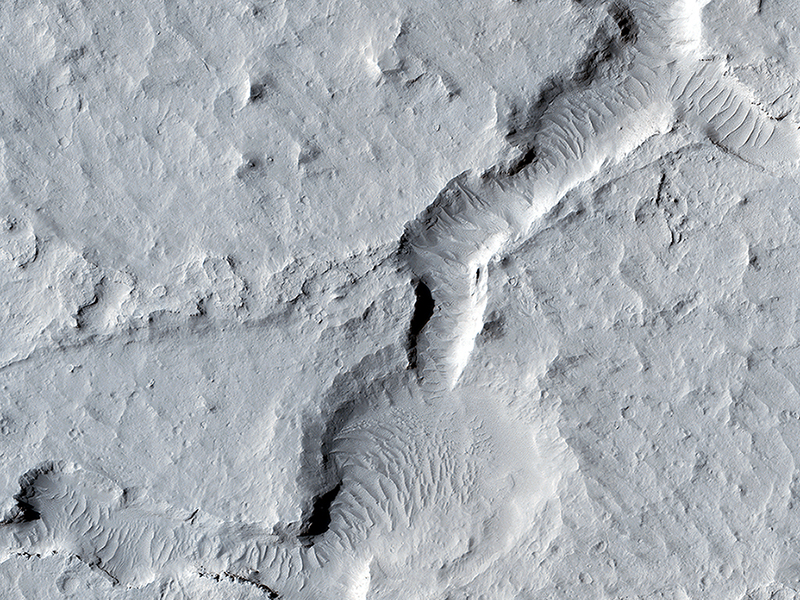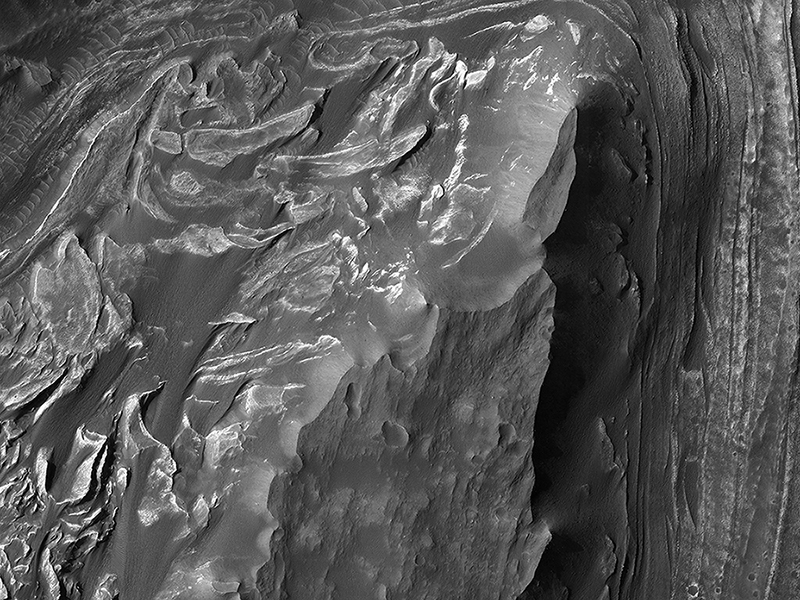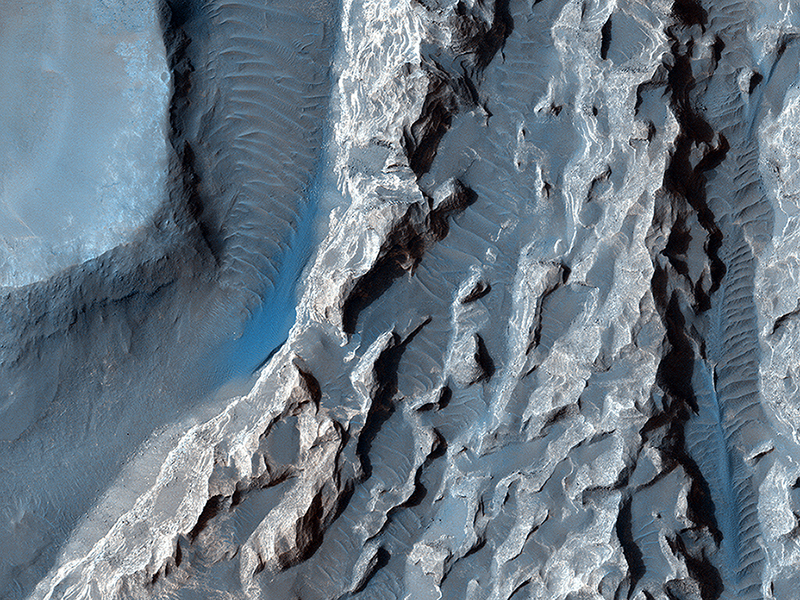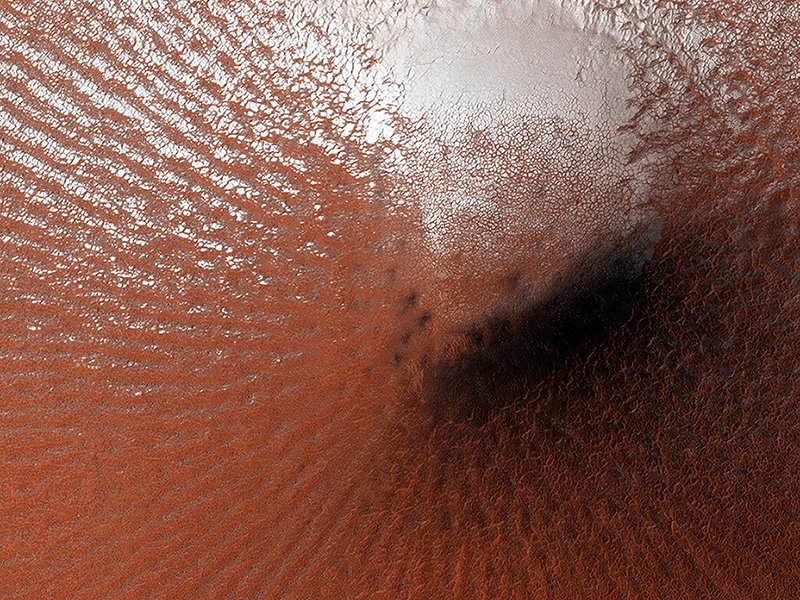HiRISE Science Team wrote:A Collection of Landforms in Eastern Elysium Planitia (ESP_037300_1825) (HiClip)
This image shows a great deal of geologic diversity in a rather small area.
In the northern section of the image, we see flat terrain that is probably an ancient lava field. This field runs up against a mesa, with slopes that show several dark streaks, possibly freshly disturbed material that is darker than the surrounding area and hasn't had time to fade. These dust avalanches are common in dust-covered regions on Mars.
Further south, we see a line of pits and also fretted terrain, before we come across a network of channels and depressions that dominate the southern portion of the observation.
HiRISE Science Team wrote:Mounds of Layered Material on the West Edge of Melas Chasma (ESP_037494_1685) (HiClip)
Melas Chasma is the widest segment of the Valles Marineris canyon, and is an area where MRO has detected the presence of sulfates.
This image offers a view of an excellent contact between layered deposits that postdate the formation of Valles Marineris and possible deposits that predate the canyon's formation. The materials are near interior layered deposits that contain sulfates and likely have hydrated minerals. At high resolution, we can have more accurate mapping of the stratigraphic relationships and contacts. Enhanced color can help to differentiate between geologic units and for mapping of sulfates.
HiRISE Science Team wrote:A Light Toned Deposit in Arsinoes Chaos (ESP_037545_1730) (HiClip)
The objective of this observation is to examine a light-toned deposit in a region of what is called “chaotic terrain” at the base of the Valles Marineris canyon system.
The deposit displays a rough surface, in contrast to the smoothness of the surrounding area. Some parts of the surface appear as if they were eroded by a fluid flowing north and south, or perhaps sculpted by the wind. This area is also visible in a Context Camera image (P04_002747_1736). This deposit may be related to interior layered deposits in the Valles Marineris where it’s been suggested to have formed in an ancient lake.
Colin Dundas wrote:Perennial Frost in a Crater on the Northern Plains (ESP_037551_2540) (HiClip)
Most surface ice on Mars is temporary. The polar layered deposits are thick stacks of permanent water ice at each pole, and the South Polar residual cap may be a permanent (although dynamic) layer of carbon dioxide ice. However, at lower latitudes, seasonal frost (mostly carbon dioxide, but some water ice) comes and goes each year.
Some outliers of water ice are found near the North Polar layered deposits. In many cases these have accumulated significant thickness, as in Louth Crater. In this case, a thin layer of bright frost was visible in a HiRISE image in early summer, covering part of the wall of a crater. However, the thickness was small—there is little visible effect on the topography of the crater. HiRISE monitored this location through the rest of the season and found that the frost remained all summer, so this is a perennial ice patch, although the edges shrank slightly over the summer.
Carbon dioxide is not stable under summer conditions, so this is likely a patch of water ice. It may be that it is in the early stages of accumulation, or that the equilibrium amount of ice in a small crater relatively far from the pole is thin.
A still-unexplained feature of this crater is the diffuse dark smudges visible on the crater floor. These resemble “defrosting spots” which are visible on carbon dioxide ice in the early spring, but they occur on frost-free areas and survive throughout the summer.
Credit: NASA/JPL/University of Arizona
<< Previous HiRISE Update



